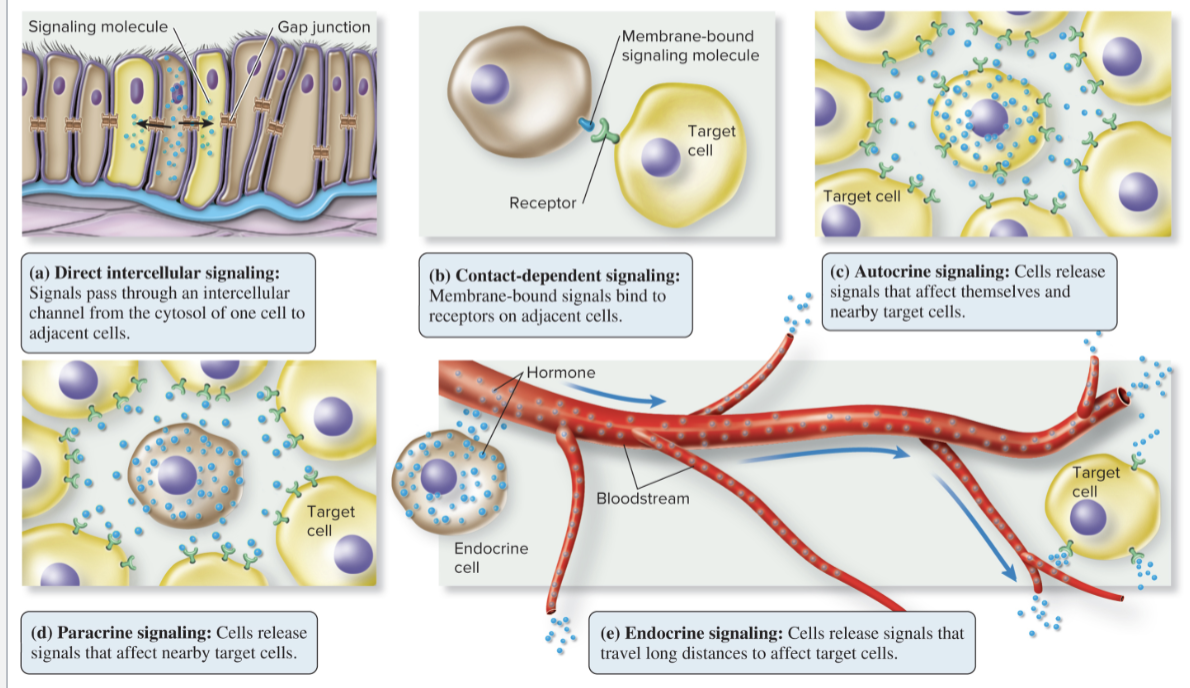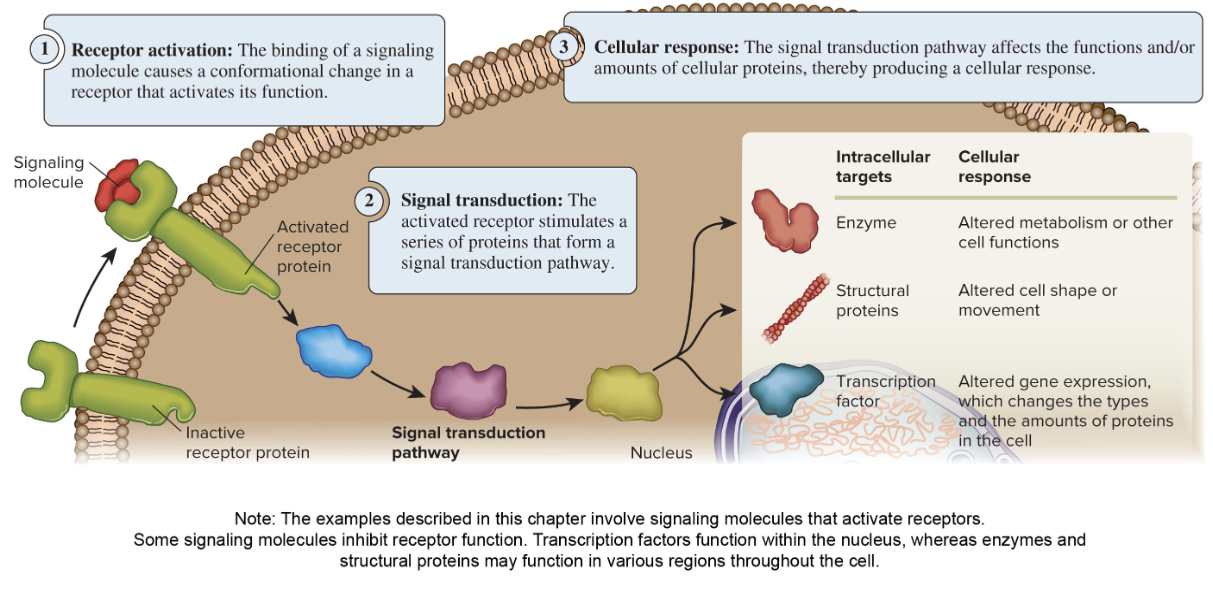biolA 190 - ch 8
1/28
There's no tags or description
Looks like no tags are added yet.
Name | Mastery | Learn | Test | Matching | Spaced |
|---|
No study sessions yet.
29 Terms
8.1
8.1
all living organisms require
cell communication/cell signaling to survive
signals are often
chemical molecules
signals can also be
physical parameters like light or temperature
direct intercellular signaling
where cell junctions allow signals to directly pass from one cell to another
contact-dependent signaling
where molecules bound to the surface of cells serve as signals to other cells encountering them
autocrine signaling
where cells secrete signaling molecules that bind to their own surface receptors
paracrine signaling
where cells release signals that affect nearby cells
endocrine signaling
where signals (called hormones) are released into the blood and affect target cells that are far away
5 types of cell signaling

3 common stages of cell signaling are
receptor activation
signal transduction
cellular response
often a gorup of proteins form a signal transduction pathway

8.2
8.2
ligand
signaling molecule that binds noncovalently to its receptor with high specificity
ligand binding changes the receptor structure
this conformational chanfe transmits the signal across the membrane t
he complec that forms between the ligand and its receptor is stable for a finite period of time
the complex will dissociate
generally, binding and release between a ligans and a receptor is relatively
rapid and equilibrium is reached
Kd, the dissociation constant, is used to
quantify the affinity receptors have for their ligands
Kd also reflects the ligand concentration where
half of the receptors have bound ligand
When the ligand is above the Kd value
most receptors are likely to have ligand bound to them
if the ligand is substantially below the Kd value, most receptors will not be bound to their ligand
8.3
8.3
most signaling molecules are small and hydrophilic or
too large to pass through the plasma membrane
cell surface receptors that are embedded in the plasma membrane
detect these types of extracellular signals
enzyme-linked receptors
typically have 2 important domains
an extracellular signal-binding domain and an intracellular catalytic domain
G protein-coupled receptors (GPCRs) interact with
intracellular proteins called G proteins
when signaling molecule binds a ligand-gated ion channel
the channel opens and allows the flow of ions across the membrane
8.4
8.4
intracellular receptors
found in the cytosol or nucleus
bind signal molecules thaty are small and hydrophobic
activation of an intracellular receptor typically leads to a change in
gene expression